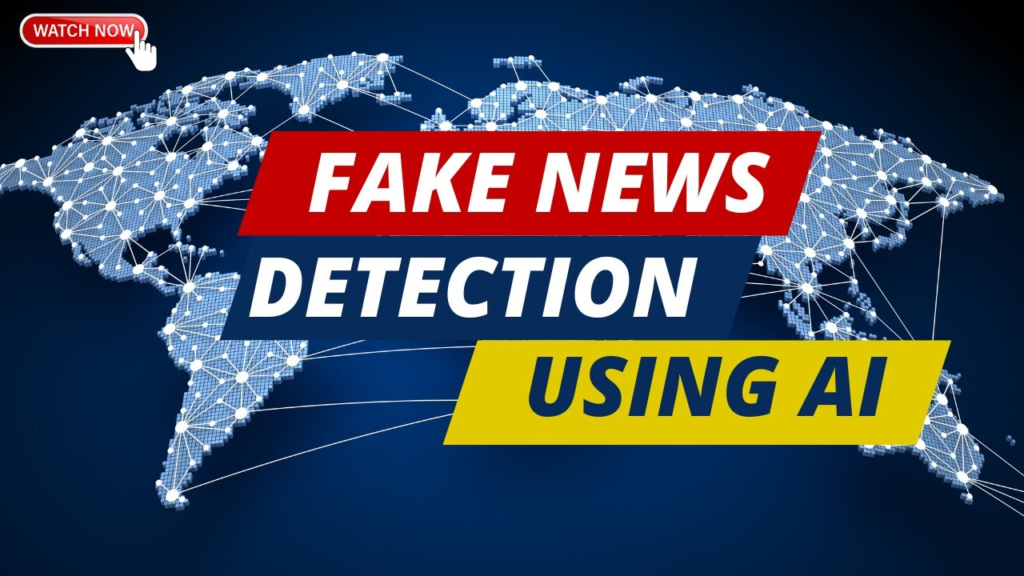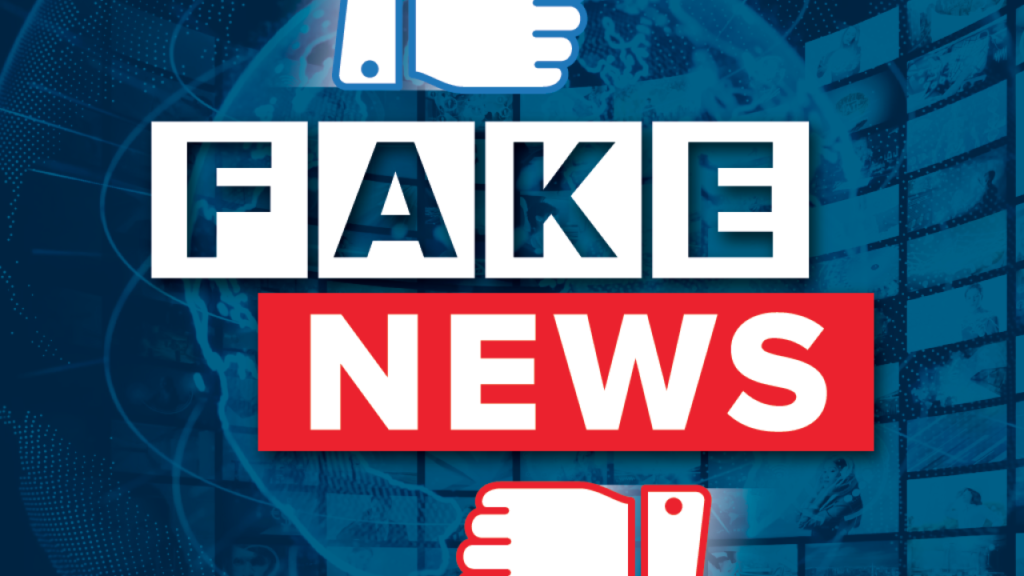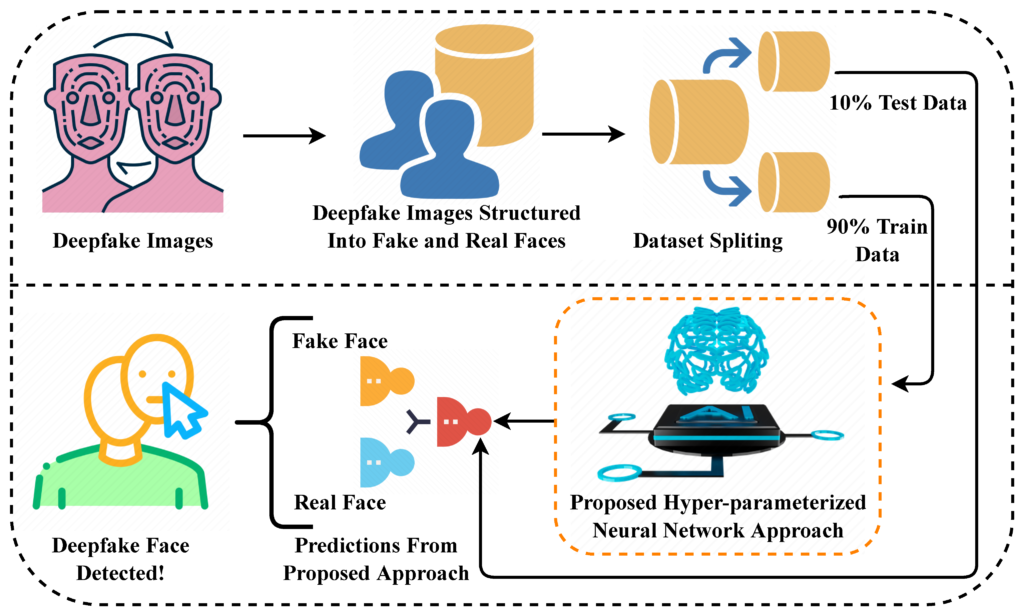Introduction
In today’s world, fake news and misinformation spread faster than ever, especially on social media platforms. Misleading stories can cause confusion, harm reputations, and even lead to dangerous situations. But did you know that Artificial Intelligence (AI) is helping to fight this problem? AI can analyze, detect, and stop the spread of fake news before it creates damage.From fabricated headlines to manipulated images and videos, fake news spreads faster than ever before, influencing opinions, creating confusion, and, in some cases, causing harm.

how AI works to combat fake news, the tools already in use, their benefits, and the challenges that come with this technology.But there’s hope. Artificial Intelligence (AI) is stepping up as a powerful tool to combat the spread of false information. AI systems can analyze content, identify misleading patterns, and even detect fake videos (deepfakes) with remarkable accuracy.In this post, we’ll explore
- What fake news is and its impact.
- How AI detects and fights fake news.
- Examples of AI tools in action.
- Challenges and the future of this technology
1. What is Fake News and Why is it a Problem?
Fake news refers to false or misleading information presented as news. It can be completely made up or twisted to mislead people.Fake news refers exaggerated information that is presented as genuine news. Unlike genuine mistakes made by journalists, fake news is often intentionally created to mislead, manipulate opinions, or gain clicks and shares.

Types of Fake News:
- Clickbait Headlines: Sensational titles designed to attract clicks, often leading to false or irrelevant content.
- Fabricated News: Completely false stories presented as genuine.
- False Stories: Completely fabricated articles shared as real news
- Misleading Content: Real information presented out of context to mislead readers.
- Deepfakes: Highly realistic but fake videos or images created using AI.
- Satirical Content: Intended for humor but misunderstood as fact by readers.
Why is Fake News Dangerous?

- Influences Decisions: It can sway opinions during elections or influence public behavior.
- Creates Panic: False stories about health crises, disasters, or safety can lead to unnecessary fear
- Damages Trust: It erodes trust in legitimate news sources.
Example: During the COVID-19 pandemic, fake news about cures and vaccines caused confusion and made it harder for people to trust accurate health information.

Common Problems Fake News Causes:
- Spreads quickly: Thanks to social media, false stories reach millions of people in minutes.
- Harms individuals and society: It damages trust in legitimate news and can lead to panic or harmful actions.
- Influences decisions: Fake news has been known to sway public opinions, elections, and even markets.
Why Traditional Methods Are Not Enough
Fact-checking by humans is effective but slow. By the time a false story is debunked, it may have already spread widely. That’s where AI comes in to save the day.
2. How AI Detects Fake News
AI uses advanced techniques to analyze data, spot patterns, and identify fake news. Let’s break down how it works in simple steps:

A. Analyzing Text with Natural Language Processing (NLP)
NLP is a branch of AI that helps computers understand human language. AI uses NLP to analyze news articles and posts by:
- Looking for Unusual Language Patterns: Fake news often contains emotional or exaggerated words like “shocking,” “unbelievable,” or “amazing.”
- Checking for Grammar and Consistency: AI flags content with poor grammar, as fake news often has errors due to rushed creation.
- Evaluating Content Tone: AI identifies emotional manipulation tactics often used in fake news.
- Semantic Analysis: AI studies the meaning behind text, identifying contradictions or logical inconsistencies.
B. Cross-Checking Facts
AI compares claims made in an article with verified facts from trusted databases or sources. If there’s a mismatch, the article may be flagged as false.
- Example: If an article claims a celebrity died, AI can compare it with news from credible platforms like Reuters or BBC to validate the information.
- Automated Fact-Checking Tools: Tools like Google’s Fact Check Explorer verify claims in real time.
C. Detecting Manipulated Media=:Fake news often includes altered images or videos. AI tools can:
- Identify edited images by analyzing inconsistencies in pixels or lighting.
- Detect deepfakes by spotting unnatural facial movements or mismatched audio and visuals.
- Fake Profiles: Detecting accounts with incomplete or misleading information.
Example: A tool like Microsoft’s Video Authenticator can analyze videos frame by frame to determine if they are manipulated.
D. Analyzing the Source and Spread=: AI can study:
- Source Reliability: Whether the website or user sharing the content has a history of spreading fake news.
- Sharing Patterns: Bots often share fake news in bulk. AI detects suspicious patterns, like a single account posting hundreds of similar links.
3. Real-Life AI Tools Fighting Fake News
Here are some popular AI-powered tools actively combating fake news:
A. Google Fact-Check Tools = Google uses AI to highlight fact-checked articles in search results. It ensures that reliable sources are ranked higher, reducing the visibility of fake news.

B. Facebook’s AI Systems = Facebook employs AI to detect and reduce the spread of fake news by:

- Flagging suspicious content for review.
- Reducing visibility of posts marked as false.
C. Snopes and FactCheck.org

These websites use AI to assist in verifying the accuracy of news articles, especially during global events like elections or pandemics.
D. AI for Detecting Deepfakes

Tools like Deepware Scanner and Sensity AI specialize in identifying deepfake videos, which are becoming a popular method for spreading misinformation.
E. Microsoft’s Video Authenticator

This tool evaluates videos frame by frame, identifying deepfake content with high accuracy.
The Role of AI in Detecting Deepfakes
Deepfakes are videos or images where a person’s face or voice is manipulated to look and sound real. These have become a major tool for spreading misinformation.

How AI Detects Deepfakes:
- Facial Analysis: AI identifies unnatural movements in facial features.
- Audio Syncing: AI checks if audio matches lip movements accurately.
- Lighting and Shadow Analysis: Deepfakes often fail to replicate realistic lighting effects.
Example: During the 2020 elections, deepfake videos of political leaders were flagged by AI tools, preventing their spread.
4. Real-Life Success Stories of AI Stopping Fake News

A. COVID-19 Pandemic
During the pandemic, AI systems flagged false claims about “miracle cures” and fake vaccine rumors. These tools helped platforms like Twitter and YouTube take down misleading posts.
B. Elections and Political Campaigns
In countries like the US and India, AI tools monitored election-related news to prevent the spread of misleading information about candidates.
C. Natural Disasters
AI systems identified and removed false reports of earthquakes or floods that could have caused unnecessar panic.
5. Benefits of AI in Combating Fake News
AI offers several advantages:

- Speed: AI analyzes thousands of articles in seconds, much faster than human fact-checkers.
- Scalability: It can monitor content across platforms like Facebook, Twitter, and YouTube simultaneously.
- Accuracy: By cross-referencing multiple sources, AI reduces the chances of human errors in fact-checking.
6. Challenges AI Faces in Detecting Fake News

Despite its strengths, AI has limitations:
A. False Positives and Negatives = AI sometimes flags genuine news as fake or overlooks subtle misinformation.
B. Evolving Fake News Techniques = Creators of fake news continuously adapt to bypass AI detection. Deepfakes, for example, are becoming more sophisticated.
C. Bias in Algorithms = If an AI system is trained on biased data, it may unfairly target certain groups or fail to recognize cultural differences in content.
D. Privacy Concerns = Monitoring user content raises questions about how much data platforms should collect and whether it infringes on privacy rights.
7. The Future of AI in Fighting Fake News

The fight against fake news is far from over, but AI is continuously evolving.
A. Improved Accuracy = Future AI systems will be better at detecting complex fake news and deepfakes.
B. Collaboration with Humans = AI and human fact-checkers will work together to improve the speed and accuracy of detection.
C. Education Tools = AI will help create apps and tools to educate users on how to identify and avoid fake news themselves.
D. Global Initiatives = Governments, tech companies, and researchers are working on global standards for using AI to combat misinformation.
e. Public Awareness Campaigns = AI will help create tools that educate users on identifying fake news, empowering them to make informed decisions.
8. How You Can Contribute
While AI is powerful, individuals play a critical role in AI fighting fake news. Here’s how you can contribute:
- Verify Before Sharing: Always check if a story is from a reliable source.
- Use Fact-Checking Websites: Platforms like Snopes and PolitiFact can confirm if an article is genuine.
- Report Suspicious Content: Many platforms allow users to flag misleading posts.
- Educate Yourself: Learn to identify common signs of fake news, such as clickbait headlines and lack of credible sources.
- Educate Others: Share tips with friends and family on identifying fake news.
Conclusion
Fake news and misinformation are serious threats to our society, but with the help of AI, we are making significant progress in tackling this issue. By analyzing language, verifying facts, and identifying fake media, AI systems can detect and stop the spread of false information more effectively than ever before.
However, technology alone isn’t enough. As individuals, we must remain vigilant and play our part by questioning what we read and share online. Together with AI, we can build a more informed and truthful digital world.
Call-to-Action
What are your thoughts on using AI to fight fake news? Share your opinions in the comments below and explore more exciting AI topics on my blog!
FAQ Section
Q1: How does AI detect fake news?
A1: AI detects fake news by analyzing language patterns, verifying facts, and using tools to identify deepfake images and videos.
Q2: What are the best tools for detecting fake news?
A2: Some popular tools include Snopes, Google Fact Check Explorer, and Facebook’s AI-based misinformation detection system.
Q3: Can AI completely eliminate fake news?
A3: While AI is highly effective, it cannot entirely eliminate fake news due to evolving tactics and human biases.
Q4: How do deepfakes contribute to fake news?
A4: Deepfakes create highly realistic fake videos or audio, making it difficult to distinguish real from fake content.
Q5: What are the challenges in using AI to fight misinformation?
A5: Key challenges include evolving fake news tactics, algorithm biases, and false positives or negatives.
